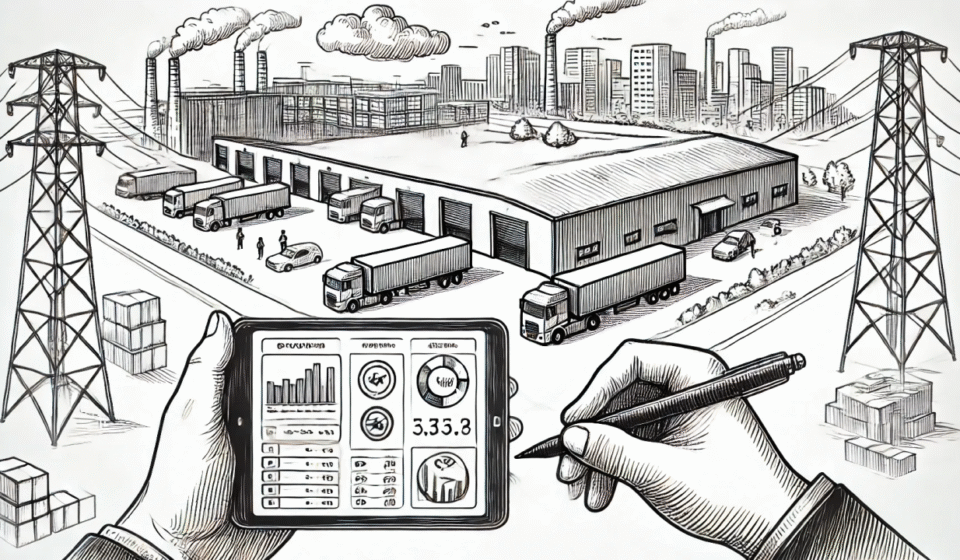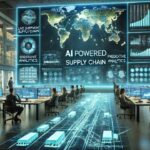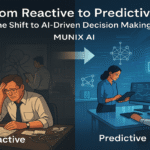
The AI Revolution in Supply Chains
Supply chains are the foundation of global commerce, yet they remain one of the most complex, inefficient, and fragile systems we rely on. Despite technological advances, many logistics networks still operate on outdated principles—reactive decision-making, rigid processes, and fragmented data.
What if we started over? What if we built supply chains from first principles, leveraging AI to create a system that wasn’t just automated, but truly intelligent?
First Principles: Rethinking Supply Chains from the Ground Up
Before we talk about AI, let’s break down the core functions of a supply chain. At its most fundamental level, a supply chain is about:
- Predicting demand – Knowing what needs to be where, and when.
- Optimizing inventory – Balancing availability and cost efficiency.
- Orchestrating movement – Moving goods seamlessly with minimal waste.
- Managing disruptions – Adapting to real-world uncertainties in real time.
For decades, businesses have tried to optimize these pillars using incremental improvements—better forecasting models, automated warehouses, more efficient routing. But these solutions operate within the constraints of human-driven, rules-based systems.
AI changes the game.
Beyond Automation: AI as an Intelligent Decision Engine
Traditional supply chains react. AI-driven supply chains anticipate.
Instead of relying on static rules and historical data alone, AI continuously learns from vast streams of real-time information—weather patterns, geopolitical events, consumer sentiment, production cycles, and even social media signals.
Here’s how AI is transforming each core function of supply chains:
1. Predicting Demand with Unmatched Precision
Old approach: Demand forecasting models that rely on past sales and seasonal trends. AI approach: Neural networks that process thousands of variables, from macroeconomic indicators to localized consumer behavior.
Why it matters:
- AI models can detect shifts in demand weeks before traditional forecasting methods.
- Businesses can adjust inventory and production proactively rather than reactively.
- Less overstock. Less stockouts. Higher profitability.
2. Inventory Optimization: Less is More
Old approach: Warehouses hold excess stock “just in case.” AI approach: Dynamic, real-time inventory balancing across multiple locations.
Why it matters:
- AI predicts exactly how much stock is needed at the right place, at the right time.
- Warehouse costs drop. Storage waste disappears.
- Supply chains become more sustainable by minimizing excess production.
3. Orchestrating Movement with Real-Time AI Logistics
Old approach: Fixed logistics routes optimized for cost, but slow to adapt. AI approach: Self-optimizing logistics networks that adjust dynamically to real-world conditions.
Why it matters:
- AI continuously reroutes shipments based on weather, traffic, and supply chain disruptions.
- Autonomous decision-making speeds up deliveries while reducing costs.
- Customers get faster, more reliable service without additional infrastructure investment.
4. Managing Disruptions Before They Happen
Old approach: When a disruption happens, businesses scramble to respond. AI approach: Predictive analytics and simulations model potential failures before they occur.
Why it matters:
- AI detects early warning signals—political instability, port congestion, supplier risk—before they cause bottlenecks.
- Businesses can shift production, reroute shipments, or pre-position inventory before a crisis hits.
- Instead of reacting, supply chains become resilient by design.
The Self-Optimizing Supply Chain
Imagine a supply chain that continuously improves itself.
- AI analyzes every decision and fine-tunes the system in real time.
- It learns from every disruption and becomes more resilient over time.
- It adapts to demand shifts instantly, ensuring customers always get what they need, when they need it.
This isn’t a vision of the future. It’s happening now.
The Competitive Edge: Adapt or Be Left Behind
Companies that integrate AI into their supply chains aren’t just improving efficiency. They’re fundamentally changing the way business works.
- Amazon’s AI-driven logistics ensure next-day delivery for millions of customers.
- Tesla’s demand-driven supply chain optimizes production without excessive inventory.
- AI-first retailers are cutting waste and improving margins without compromising availability.
The message is clear: The businesses that adopt AI-driven supply chains will outcompete those that don’t.
What’s Next?
The transition to intelligent supply chains isn’t just about technology—it’s about a new way of thinking.
- Start with your data – AI is only as powerful as the information it learns from. Unifying and structuring supply chain data is step one.
- Automate decisions, not just processes – The real power of AI is in decision-making, not just automation.
- Think in real-time – The world moves fast. Your supply chain should too.






